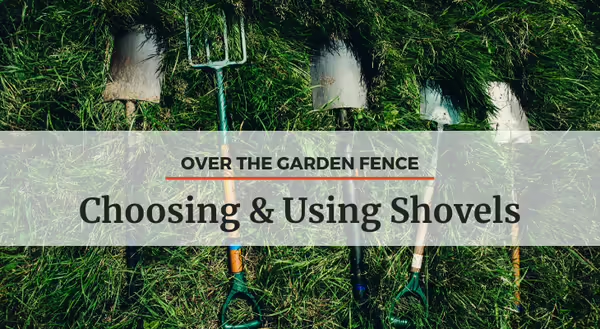
Many of us are already watching our calendars and the weather for signs of Spring. It officially starts Thursday, March 19, and ends Saturday, June 20. Avid gardeners are making plans to be toiling away preparing vegetable and landscape beds for the 2020 growing season.
Very often, if not always, this work means using a shovel. If we were all great gardeners, our shovel(s) got put away in 2019, nice and clean, with a thin coating of your favorite rust preventer.
How many shovels do you have? There are a great many kinds of shovels hanging on the wall in your favorite garden center. Shovels with short handles or long ones, shovels that area rounded or squared off, and those with strong serrations with the expectation you will be able to dig out about anything. Clearly some are very purposeful in the expected use.
Depending on how you ask the internet, there are between eight and 17 kinds of shovels “That everyone should know.” They are listed as “Different types of shovels for every digging need” or “The best shovels for [insert task here]” or "Don't send a fork to do a shovel's job." The list goes on.
How do we pick one to purchase or use? According to “Ag Safety and Health,” the most important characteristics to consider are: weight, length, type of handle, blade size and shape, and angle.
Two common long handled shovels gardeners use are the rounded and square-edged. One is for digging holes and turning the soil, and the other for shoveling from hard surfaces, respectfully. The rounded edge shovels need to be sharp for ease of digging and cutting weeds off at the surface. The square edged shovel, which uses a hard surface like your driveway when scooping up soil amendments or composted mulch, and is not always sharpened. (Seasonal note: squared-edged shovels have been known to be called into winter service to clear the driveway of snow. Just be sure to leave them dry and lightly oiled between uses, or you end up with a very rusty shovel come spring). Round-edged shovels also are good for chipping away at the sides and bottom of a hole (that squared-off shovel spreads out your muscle power along the entire edge limiting your effectiveness).
Short handled shovels usually have a “D” or “T” handle of some kind that gives the gardener a digging and scooping advantage once you are bending over or on your knees. There are rounded and squared of versions available too.
Pay attention to the bend on the shank, as it can be important for what you are using it for most of the time. Take that shovel off the store display and pretend you are digging or scooping. How does it feel, how bent over are you? Usually a hole is dug standing straight up and scooping off a hard surface you are bent over slightly for leverage.
Unless you are digging all day long, every day from spring through fall, wooden handles are just fine. You will see orange and yellow fiberglass handles that come with a lifetime guarantee. Be sure to include those in your will. You also can find lots of other purpose-built shovels made with various materials. Plastic, hard rubber, fiberglass and aluminum are all out there. Some are for weight reduction or working in wet environments. There are spades for “double digging” your garden or those for digging drain tiles.
In the end, there is no need to have one of each. Just do a little homework and choose wisely.
About the author: Richard Hentschel’s expertise extends across several subject areas with specialties in lawn care, fruit tree production, woody ornamentals, and home and community gardening. During his 45-year career in horticulture and agriculture, Hentschel became a well-known and respected expert for commercial and homeowner audiences, industry organizations, and media. He retired from University of Illinois Extension in April 2022 with nearly 30 years of service as a Horticulture Specialist and Educator in northern Illinois.